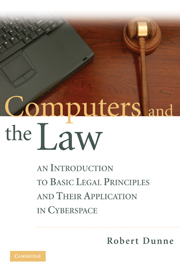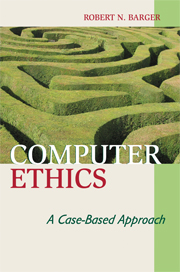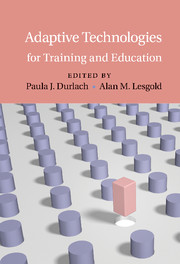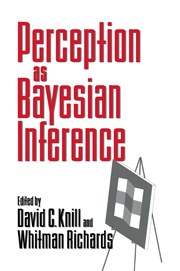Refine search
Actions for selected content:
2860 results in Computing and Society
II - Cultural and Commercial Appropriation
-
- Book:
- Players Unleashed!
- Published by:
- Amsterdam University Press
- Published online:
- 22 January 2021
- Print publication:
- 15 July 2012, pp 37-86
-
- Chapter
- Export citation

Information Technology
- Agent of Change
-
- Published online:
- 05 June 2012
- Print publication:
- 11 May 1989

Computers and the Law
- An Introduction to Basic Legal Principles and Their Application in Cyberspace
-
- Published online:
- 05 June 2012
- Print publication:
- 29 May 2009

Face-to-Face Communication over the Internet
- Emotions in a Web of Culture, Language, and Technology
-
- Published online:
- 05 June 2012
- Print publication:
- 16 June 2011

Computer Ethics
- A Case-based Approach
-
- Published online:
- 05 June 2012
- Print publication:
- 09 June 2008

Adaptive Technologies for Training and Education
-
- Published online:
- 05 March 2012
- Print publication:
- 20 February 2012

Perception as Bayesian Inference
-
- Published online:
- 05 March 2012
- Print publication:
- 13 September 1996
Adaptive Technologies for Training and Education - Half title page
-
- Book:
- Adaptive Technologies for Training and Education
- Published online:
- 05 March 2012
- Print publication:
- 20 February 2012, pp i-ii
-
- Chapter
- Export citation
Contributors
-
-
- Book:
- Adaptive Technologies for Training and Education
- Published online:
- 05 March 2012
- Print publication:
- 20 February 2012, pp xi-xii
-
- Chapter
- Export citation
Chapter 16 - A Model-Driven Instructional Strategy
- from Part V - Culminations
-
-
- Book:
- Adaptive Technologies for Training and Education
- Published online:
- 05 March 2012
- Print publication:
- 20 February 2012, pp 303-317
-
- Chapter
- Export citation
Chapter 11 - Emergent Assessment Opportunities
- from Part III - Experiential Learning and Ill-Defined Domains
-
-
- Book:
- Adaptive Technologies for Training and Education
- Published online:
- 05 March 2012
- Print publication:
- 20 February 2012, pp 222-235
-
- Chapter
- Export citation
Adaptive Technologies for Training and Education - Title page
-
-
- Book:
- Adaptive Technologies for Training and Education
- Published online:
- 05 March 2012
- Print publication:
- 20 February 2012, pp iii-iii
-
- Chapter
- Export citation
Chapter 14 - The Art and Science of Developing Intercultural Competence
- from Part IV - Natural Language Processing for Training
-
-
- Book:
- Adaptive Technologies for Training and Education
- Published online:
- 05 March 2012
- Print publication:
- 20 February 2012, pp 261-286
-
- Chapter
- Export citation
Part II - Student Modeling Beyond Content Mastery
-
- Book:
- Adaptive Technologies for Training and Education
- Published online:
- 05 March 2012
- Print publication:
- 20 February 2012, pp 67-164
-
- Chapter
- Export citation
Chapter 5 - Student Modeling and Intelligent Tutoring Beyond Coached Problem Solving
- from Part II - Student Modeling Beyond Content Mastery
-
-
- Book:
- Adaptive Technologies for Training and Education
- Published online:
- 05 March 2012
- Print publication:
- 20 February 2012, pp 96-116
-
- Chapter
- Export citation
Introduction
-
- Book:
- Adaptive Technologies for Training and Education
- Published online:
- 05 March 2012
- Print publication:
- 20 February 2012, pp 1-4
-
- Chapter
- Export citation
Figures
-
- Book:
- Adaptive Technologies for Training and Education
- Published online:
- 05 March 2012
- Print publication:
- 20 February 2012, pp vii-ix
-
- Chapter
- Export citation
Chapter 8 - Training Decisions from Experience with Decision-Making Games
- from Part III - Experiential Learning and Ill-Defined Domains
-
-
- Book:
- Adaptive Technologies for Training and Education
- Published online:
- 05 March 2012
- Print publication:
- 20 February 2012, pp 167-178
-
- Chapter
- Export citation
Chapter 15 - Practical Issues in the Deployment of New Training Technology
- from Part V - Culminations
-
-
- Book:
- Adaptive Technologies for Training and Education
- Published online:
- 05 March 2012
- Print publication:
- 20 February 2012, pp 289-302
-
- Chapter
- Export citation
Contents
-
- Book:
- Adaptive Technologies for Training and Education
- Published online:
- 05 March 2012
- Print publication:
- 20 February 2012, pp v-vi
-
- Chapter
- Export citation
